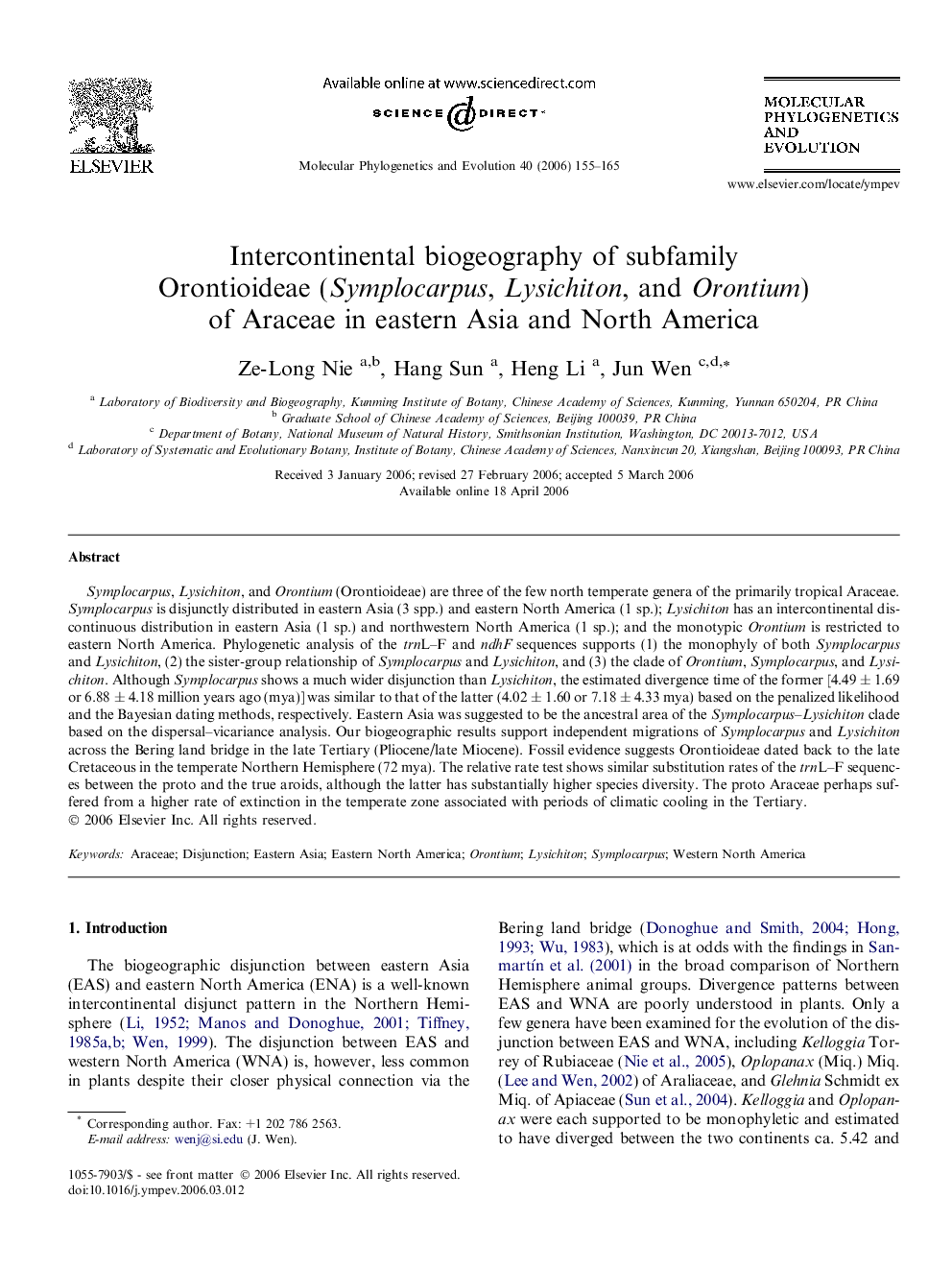| کد مقاله | کد نشریه | سال انتشار | مقاله انگلیسی | نسخه تمام متن |
|---|---|---|---|---|
| 2835943 | 1164358 | 2006 | 11 صفحه PDF | دانلود رایگان |

Symplocarpus, Lysichiton, and Orontium (Orontioideae) are three of the few north temperate genera of the primarily tropical Araceae. Symplocarpus is disjunctly distributed in eastern Asia (3 spp.) and eastern North America (1 sp.); Lysichiton has an intercontinental discontinuous distribution in eastern Asia (1 sp.) and northwestern North America (1 sp.); and the monotypic Orontium is restricted to eastern North America. Phylogenetic analysis of the trnL–F and ndhF sequences supports (1) the monophyly of both Symplocarpus and Lysichiton, (2) the sister-group relationship of Symplocarpus and Lysichiton, and (3) the clade of Orontium, Symplocarpus, and Lysichiton. Although Symplocarpus shows a much wider disjunction than Lysichiton, the estimated divergence time of the former [4.49 ± 1.69 or 6.88 ± 4.18 million years ago (mya)] was similar to that of the latter (4.02 ± 1.60 or 7.18 ± 4.33 mya) based on the penalized likelihood and the Bayesian dating methods, respectively. Eastern Asia was suggested to be the ancestral area of the Symplocarpus–Lysichiton clade based on the dispersal–vicariance analysis. Our biogeographic results support independent migrations of Symplocarpus and Lysichiton across the Bering land bridge in the late Tertiary (Pliocene/late Miocene). Fossil evidence suggests Orontioideae dated back to the late Cretaceous in the temperate Northern Hemisphere (72 mya). The relative rate test shows similar substitution rates of the trnL–F sequences between the proto and the true aroids, although the latter has substantially higher species diversity. The proto Araceae perhaps suffered from a higher rate of extinction in the temperate zone associated with periods of climatic cooling in the Tertiary.
Journal: Molecular Phylogenetics and Evolution - Volume 40, Issue 1, July 2006, Pages 155–165